
The Otterhound is an old British breed, with Bloodhound ancestors in its background,
and is in turn one of the ancestors of the Airedale Terrier. There are fewer
than 1000 Otterhounds world wide. This is a large, strong breed with a hard,
crisp and close coat, oily in nature that can withstand any amount of immersion
in water. It is a peer among swimmers, its progress through the water being
aided greatly by its webbed feet. Otterhounds are affectionate but don't demand
attention all the time. They are generally quite willing to include most two
and four legged members of the household in their notion of their "pack".
While Otterhounds can be good with kids, a young Otterhound is big and likely
to be klutzy and may not be the best companion for a wobbly toddler or a frail
elderly person.
Life Expectancy:
10-13 years
Energy Level:
Average.
Living Conditions:
Need yard for play.
Barking:
Above average.
Exercise Needs:
Yard play or long walk. Never let off leash.
Breed Group:
Large
Size:
Hound
Height:
24-28 inches
Weight:
70 to 120 pounds
Standard Hair Colors:
All colors ranging from black to tan.
National breed club:
The
Otterhound Club
of America
The Otterhound is a large breed of dog developed in England to hunt otter. The hunting of otters was practiced because they were preying on the fish in the rivers and streams to an annoying extent. Otter hunting is now banned. The sport enjoyed a considerable vogue in the summer months, since it was the only hunting possible. Thus, otter hounds enjoyed a coinciding heyday in 19th century England. As a large dog with an impressively deep voice, an Otterhound can make a good watchdog, but their friendly nature makes them poor candidates as guard dogs. They'll "woof" or bay at an unusual noise, but you'd have hard time training most for "attack" work.
Otterhounds are generally good with other dogs and with other animals if they are raised with them or introduced to them carefully. Many Otterhound owners also have cats while some Otterhounds live happily with parrots, horses and pigs. These hounds are quite willing to include most two and four legged members of the household in their notion of their "pack". Otterhounds can be good with kids, but a young Otterhound is big and likely to be klutzy and may not be the best companion for a wobbly toddler or a frail elderly person.
Otterhounds need and want a fair amount of exercise, particularly when young, so though you don't need a huge yard, you do need a fenced area for them. If the area is not big, taking the dog on long walks or dog jogging will make them properly exercised. Otterhounds are not good candidates for walking off leash.
Otterhounds can make great pets, but potential owners must not be obsessed with keeping the house/clothes spotless, as they can be independent and fun-loving. OH owners must also have a securely fenced yard, and is not wary of neighbors who do not love that hound voice. Otterhounds are an ideal pet that don't demand attention all the time. If you're in search of a very loving dog that can serve as a watchdog (but not as guard dogs) the otterhound is for you.
Though some Otterhounds do have a fair amount of coat, most do not shed a great deal. With an "average" Otterhound, expect to brush the coat on a weekly basis to keep the coat from matting, particularly on the head, legs and underside. Grooming also gives you a good chance to find any unusual lumps and bumps on the dog, and will keep shedding under control. Start your OH puppy out with a gentle weekly brushing, and he'll learn to love the activity, or at least tolerate it pretty well.
Like many of the large breeds, they are subject to hip dysplasia and bloat. Otterhounds are also subject to a potentially fatal bleeding disorder. In the last few years, there have also been an increasing number of reports of seizures in Otterhounds. The Otterhound Club of America's health surveys conducted in 1996 and again in 2003 indicated major health problems are uncommon until old age. This breed is usually quite slow to mature, both physically and mentally.
Like many of the hounds, OHs are not natural retrievers - so if you really want a great "Frisbee" dog, you may want to consider a Retriever. The Otterhound are big friendly dogs, but with a mind of their own. Left to their own devices, OHs can be very good at entertaining themselves - but be warned that it may be in ways that you and your neighbors won't find acceptable, such as excavating or baying.
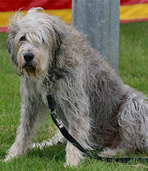
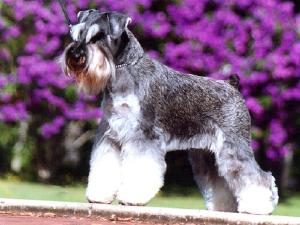 Miniature Schnauzer
Miniature Schn
Miniature Schnauzer
Miniature Schn
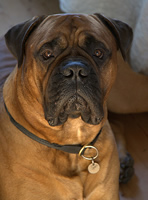 Bullmastiffs: A guide to dogs and puppies of the Bullmastiff breed
The Bullmastiff!
The Bullmastiff is a powerfully built anim
Bullmastiffs: A guide to dogs and puppies of the Bullmastiff breed
The Bullmastiff!
The Bullmastiff is a powerfully built anim
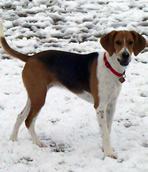 Harriers: A guide to dogs and puppies of the Harrier breed
The Harrier!
The Harrier is a hunting dog that looks like a
Harriers: A guide to dogs and puppies of the Harrier breed
The Harrier!
The Harrier is a hunting dog that looks like a
 Fila Brasileiro
Fila Brasileir
Fila Brasileiro
Fila Brasileir
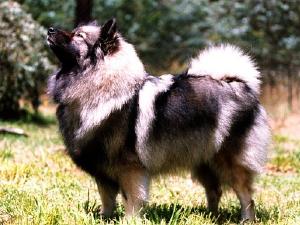 Keeshond
Keeshond
Keeshond
Keeshond
Copyright © 2005-2016 Pet Information All Rights Reserved
Contact us: www162date@outlook.com